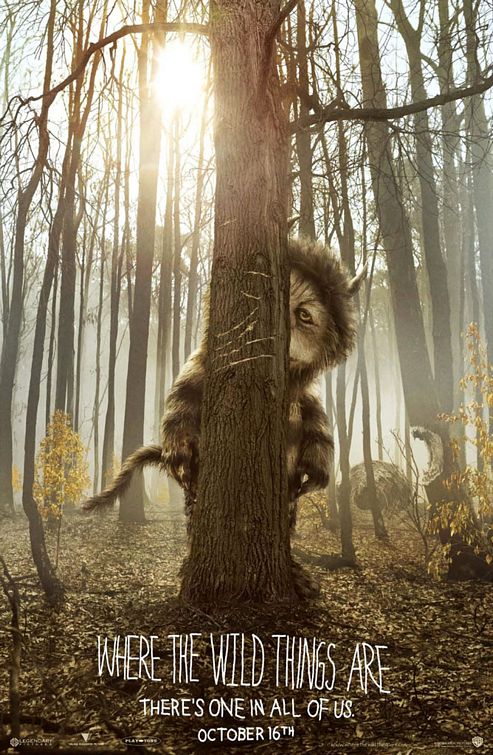
NEW YORKER: The opening sequences of Spike Jonze’s “Where the Wild Things Are”—a live-action feature based on Maurice Sendak’s 1963 children’s classic—are sensationally good. Max (Max Records) is an angry nine-year-old boy: his teen-age sister has abandoned him for her friends, and his divorced mother (Catherine Keener) noodles on the couch with her boyfriend. The way Max Records plays him—with darting eyes, and lips pressed together in rage—the boy has no idea that anyone’s feelings but his own could be real. He builds forts in his bedroom and an igloo in the front yard. He wants to be enclosed in his own imaginative space, but he also needs to burst out and tear around, and, as Max crashes through the house, Jonze’s camera, bounding up and down stairs, stays with him and brings us as close to a boy’s impetuousness and egotism as we’re likely to get in the movies. The sequence has non-stop momentum and a juggernaut impact. Max’s mother tries to calm him down, but he bites her on the arm and runs out of the house, wearing a wolf suit, its pointed ears sticking up like two little knives. As he gets into a boat and heads for the open sea, the movie slows down and offers a different kind of wonderment: the dark skies and foamy white waves of a 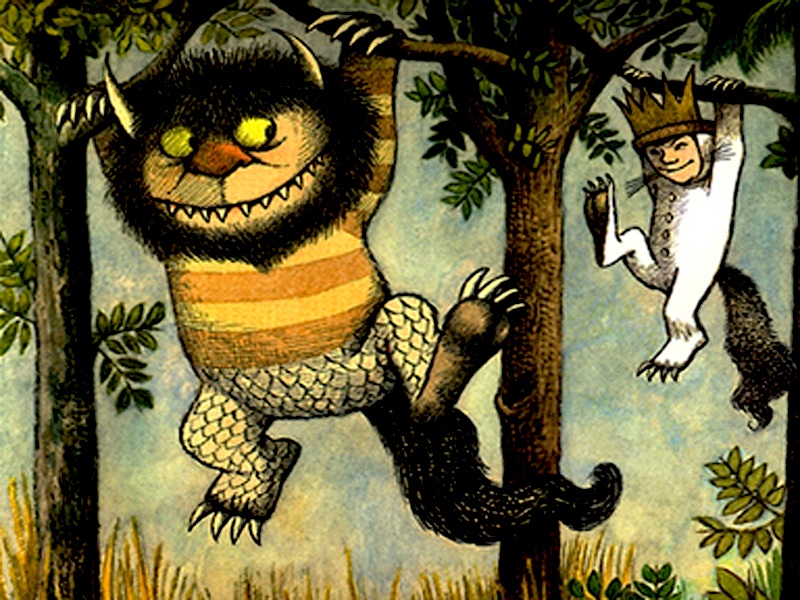 perilous journey.
perilous journey.
Max arrives at a mysterious island, and Jonze, re-creating the monsters that live there, stays close to Sendak’s ineffably goofy style. The creatures are eight or even nine feet tall—snouted, horned, clawed, and furry, with huge heads and snaggleteeth that are as pointed as Max’s wolf ears. One is lionish, another goatish—each suggests a different animal, yet stays within a child’s fantasy of that animal. An eccentric menagerie, they are physically a little manic, but they’re also almost tragic in their uncertainty and their melancholy. They briefly think of eating Max, but, claiming magic powers, he shouts, “Be still!,” and they crown him king instead. “Let the wild rumpus start!” he cries, and they all run and jump, bash one another, gouge holes in trees, and fall down in a heap, with Max happily nestled among them. Then “Wild Things” runs into trouble. MORE
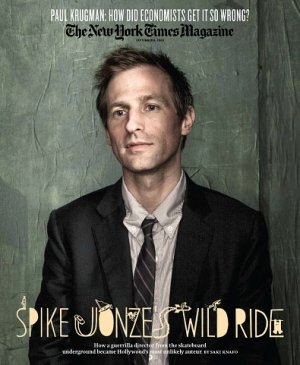 NEW YORK TIMES: Although there were plenty of factors that contributed to the movie’s endless delays, what caused Jonze the most grief with the studio seems to have been his insistence on shunning a more traditional narrative in favor of directly conveying, through moments and images, those raw, untamed feelings. The blogs that reported on Jonze’s disagreement with Robinov and other Warner executives tended to frame the dispute in familiar terms, as a conflict between Hollywood’s love of all things light and an auteur’s “dark” vision. Really, though, the quarrel was about something more unusual in Hollywood than darkness versus light, something more central to Jonze’s identity: the question of plot versus attitude. Jonze’s attitude, much more than the ability to spin an enthralling tale, is at the heart of who he is and why he matters to people. His music videos don’t tell stories; they capture a feeling. “Jackass” is probably the most successful plotless movie in American film history. The narratives in “Adaptation” and “Being John Malkovich” were formally groundbreaking, to be sure, but in both cases it was mostly Charlie Kaufman who supplied them. What Jonze contributed to those films — and what earned him most of the acclaim he received for them — was an attitude, a feel: a deadpan sense of humor, a do-it-yourself production style, an eye for naturalistic detail in everything from the set design to the performances. In nearly all of his works (as in the Torrance of his youth) the realistic and the banal merge with the fantastic and the extreme. To borrow a phrase that Sendak once used to describe his best-known creation, Max, Jonze inhabits a world in which one can “skip from fantasy to reality in the conviction that both exist.” MORE
NEW YORK TIMES: Although there were plenty of factors that contributed to the movie’s endless delays, what caused Jonze the most grief with the studio seems to have been his insistence on shunning a more traditional narrative in favor of directly conveying, through moments and images, those raw, untamed feelings. The blogs that reported on Jonze’s disagreement with Robinov and other Warner executives tended to frame the dispute in familiar terms, as a conflict between Hollywood’s love of all things light and an auteur’s “dark” vision. Really, though, the quarrel was about something more unusual in Hollywood than darkness versus light, something more central to Jonze’s identity: the question of plot versus attitude. Jonze’s attitude, much more than the ability to spin an enthralling tale, is at the heart of who he is and why he matters to people. His music videos don’t tell stories; they capture a feeling. “Jackass” is probably the most successful plotless movie in American film history. The narratives in “Adaptation” and “Being John Malkovich” were formally groundbreaking, to be sure, but in both cases it was mostly Charlie Kaufman who supplied them. What Jonze contributed to those films — and what earned him most of the acclaim he received for them — was an attitude, a feel: a deadpan sense of humor, a do-it-yourself production style, an eye for naturalistic detail in everything from the set design to the performances. In nearly all of his works (as in the Torrance of his youth) the realistic and the banal merge with the fantastic and the extreme. To borrow a phrase that Sendak once used to describe his best-known creation, Max, Jonze inhabits a world in which one can “skip from fantasy to reality in the conviction that both exist.” MORE
NEW YORKER: At the conclusion of their new movie, “A Serious Man,” the Coen brothers pull off a neat little joke. The picture is devoted to the travails of an unhappy Midwestern Jewish family—a real menagerie—in the sixties, and, in the end titles, the Coens have inserted, after the names of hardworking laboratories, the words “No Jews were harmed in the making of this motion picture.” Very good; first rate, in fact. But I’m not sure it’s true. I know of at least two Jews who were harmed—Ethan and Joel Coen. “A 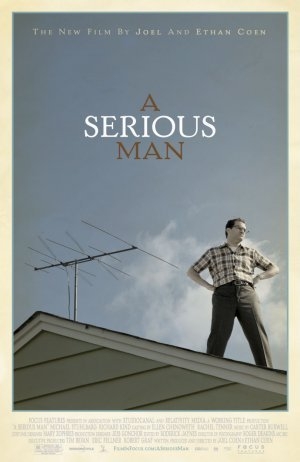 Serious Man,” like “Burn After Reading,” is in their bleak, black, belittling mode, and it’s hell to sit through. The movie is a deadpan farce with a schlemiel Job as a hero—Professor Larry Gopnik (Michael Stuhlbarg), a physicist at a local university, whose life, in 1967, is falling apart. Gopnik’s wife (Sari Lennick) is leaving him for a sanctimonious bastard (Fred Melamed) who covers his aggressions against Larry with limp-pawed caresses and offers of “understanding.”
Serious Man,” like “Burn After Reading,” is in their bleak, black, belittling mode, and it’s hell to sit through. The movie is a deadpan farce with a schlemiel Job as a hero—Professor Larry Gopnik (Michael Stuhlbarg), a physicist at a local university, whose life, in 1967, is falling apart. Gopnik’s wife (Sari Lennick) is leaving him for a sanctimonious bastard (Fred Melamed) who covers his aggressions against Larry with limp-pawed caresses and offers of “understanding.”
Larry’s kids are thieving brats, and his hapless, sick, whining brother (Richard Kind) camps on the living-room couch and refuses to look for work. There’s more, much more, a series of mishaps, sordid betrayals, and weird coincidences, but Larry, a sweet guy and “a serious man”—upright, a good teacher, a father—won’t hit back. Occasionally, his eyebrows fluttering like street signs in a hurricane, he stands up for himself, but he won’t take a shot at anyone, or try to control anyone, verbally or any other way. He won’t even sleep with the dragon-eyed but sexy and highly available woman next door who sunbathes naked. As a piece of moviemaking craft, “A Serious Man” is fascinating; in every other way, it’s intolerable. What happens in Minnesota has none of the warmth and expansiveness of a folktale, either traditional or modern. (Isaac Bashevis Singer would have been disgusted by the hero’s backing away from the babe next door.) The Coens’ humor is distant, dry, and shrivelling, and they make the people in “A Serious Man” so drably unappealing that you begin to wonder what kind of disgust the brothers are working off. MORE
*
LOS ANGELES TIMES: When it comes to the intersection of the Coens’ lives and work, they offer their own advice, which to them is every bit as important as anything Rashi might have said. It’s found midway through “A Serious Man,” when the Korean father of one of Larry’s students comes calling. Larry believes the student tried to bribe him, leaving a thick envelope of cash on his desk. The father disputes this and plans to sue Larry for defamation. Unless, of course, Larry keeps the cash and changes the kid’s grade. Larry, understandably, is confused. How can you sue for defamation if you’re copping to the envelope’s existence?
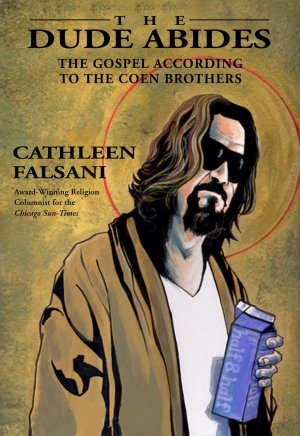 The father’s advice? “Accept the mystery.”
The father’s advice? “Accept the mystery.”
Is that the way the Coens would like people to approach their films?
“Yes! Please!” Joel begs. “We don’t engage in a lot of reflection when it comes to our movies — ”
” — and we’d love it if everyone followed our lead,” Ethan adds, chuckling.
But when you immerse yourself in their work, there are certain themes, certain threads that, you know, really tie the room together. And while the Coens might dispute that, calling themselves mere “storytellers,” we can’t help but think that “A Serious Man” is just the latest example of the brothers’ idiosyncratically personal filmmaking. A look at what they’ve secretly been trying to tell us: MORE
